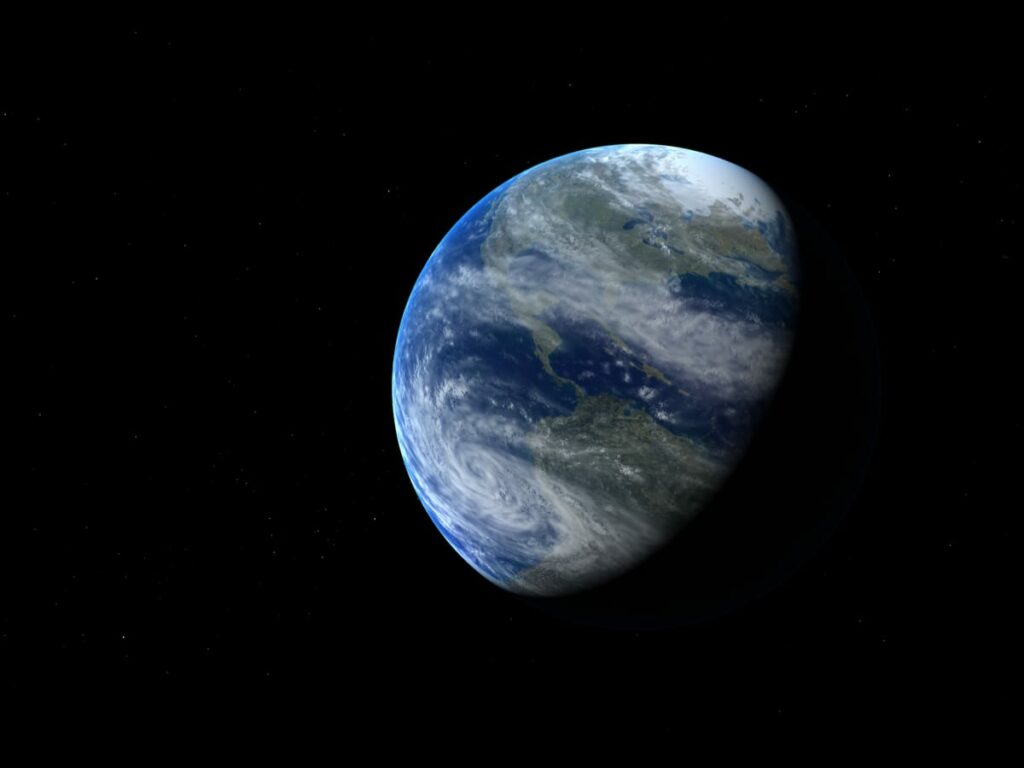Scientists have long pondered the relationship between the Earth’s spin axis and climate change. These cycles explain Earth’s orbital characteristics variations, and Milutin Milankovitch first proposed their connection with global warming in the 1930s. Today, this connection is widely accepted as an essential part of Earth’s overall climate change process.
While Milankovitch cycles may have a role in the climate change of the past 2.5 million years, the Earth’s current warming has occurred over a short period. According to NASA satellite observations, the amount of solar energy absorbed by the Earth has not changed significantly over the past 150 years. Although the cycles may have played a role in recent warming, other factors such as changes in ice sheets and atmospheric carbon dioxide are also significant causes of climate change.
To understand the effects of the Milankovitch cycle on climate, we need to look at three aspects of our solar system. These three aspects are precession, tilt, and eccentricity. When these factors change, we can expect the distribution of incoming solar energy to change. These changes in the distribution lead to a change in the climate. But how do these changes impact the current temperatures of the Earth?
Eccentricity
Earth’s orbit is a cause of climate changes. The unstable orbit of the Earth is responsible for the cycles in the climate. Geological studies have confirmed this. The Earth spent 90,000 years in an ice age, followed by 10,000 years of interglacial periods. This means that Earth is due for another ice age within ten thousand years. Regardless of what causes global warming, the cycles are likely to continue.
Three general factors trigger the Milankovitch cycles: the tilt and obliquity of the Earth’s axis and the increasing eccentricity of the Earth’s orbit. These factors have a profound impact on climate change because even small changes in the distribution of solar energy can lead to dramatic changes in the climate.
The change in the tilt results in differences in the amount of solar radiation received on Earth’s surface. This effect affects climate, causing many scientists to think that global warming is caused by global cooling.
Although changes in the solar radiation distribution did not cause significant temperature changes, they can initiate powerful feedback mechanisms that amplify the effects of the Milankovitch cycles. For example, a slight increase in solar radiation at the northern latitudes can cause glacier melt. This is because the bright white surface of ice reflects less sunlight, resulting in warmer ocean temperatures. However, when the ice covers melt, the oceans warm.

The wobble in the polar hemispheres is another cause of different seasons. The polar hemispheres will have more summer solar radiation and a cooler winter at perihelion. It also contributes to the amount of snow in the southern hemisphere. While the natural cycle is well understood, humankind has altered it significantly, making the question of global warming more exciting and almost entirely attributable to human influence.
The Earth’s tilt is also responsible for the seasonal difference between the Northern and Southern hemispheres. Approximately 11,000 years ago, the Earth was in a period of mild climate, and the planet’s tilt caused a significant seasonal difference between the two regions. This cycle is now ending. The following process will start in approximately twenty-two thousand years, and it will then reverse itself.
Precession
The Milankovitch cycles are natural variations in Earth’s orbit that cause changes in the amount of incoming solar radiation. They occur at mid-latitudes between thirty and sixty degrees north or south of the equator—the three main differences in Earth’s orbit influence solar radiation. In addition, the tilt and wobble cycles are influenced by the amount of landmass in the northern hemisphere facing the sun.
Although the Milankovitch cycles do not cause dramatic temperature changes, they do influence the composition of Earth’s atmosphere. For example, CO2 from the Southern Ocean can spread into the atmosphere, amplifying the original warming. Tropical marine sediments show warming about a thousand years after the Antarctic and the warm period began, and this warming coincides with the rise in CO2.
The Earth’s orbit is an ellipse instead of a perfect circle due to the gravitational forces of neighboring planets Jupiter and Saturn. Eccentricity is the deviation from the ideal circle, making precession a critical factor in global warming.
Spin axis
The third cycle is due to the precession of the Earth’s spin axis. In a cycle lasting 23,000 years, Earth is closest to the Sun in January and further away in July. This precession will reverse in 11,000 years, causing more severe winters in the Northern Hemisphere. In a detailed view of glacial periods, the Earth’s precession and Milankovitch cycles significantly correlate.
While global warming and climate change theory are popular, it is not without their problems. The idea requires that two-thirds of the Earth’s land area lies in the Northern Hemisphere. And if two-thirds of the land on Earth is in the Northern Hemisphere, then the temperature and climate will be correspondingly lower than in the Southern Hemisphere. This pattern is a good indicator of the insolation patterns and helps us understand why we see such drastic climate changes.
The theory that the sun’s rotation causes global warming has many supporters but has been criticized for its shaky scientific foundations. Milankovitch’s theory was first proposed in the 1930s. Still, the first scientific evidence was not provided until the 1970s, when researchers from the CLIMAP project linked changes in ocean sediment core data to the Milankovitch cycles. And these changes, according to Milankovitch, could explain the Great Ice Ages and other periods of global warming.
The Earth’s orbit, tilt, and spin caused climate change in the past, but these changes were so slow that they are not the primary cause of global warming today. These cycles were responsible for a long-term cooling trend.
While Milankovitch cycles contribute to global cooling and warming, they do so over thousands of years. The global warming we have been experiencing over the past 150 years is not related to the Milankovitch cycles and represents primarily human influence.














